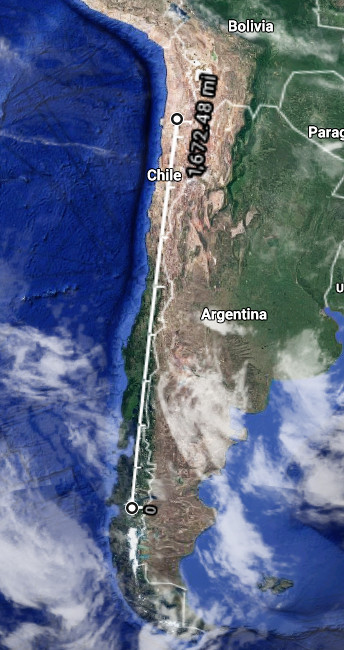CHILE AQUEDUCT
A fountain on every mountain.
THE BROAD SITUATION
Southern Chile has many fresh water rivers which flow into the sea largely unharnessed. Together they have an annual outflow of ??.
Northern Chile is one of the driest places on earth.
Chile's economy relies on fruit farming and copper mining, both water-intensive processes.
By building an aqueduct to cheaply transport water North, we can improve the profitability, beauty, and security of Chile's natural resources and industries.
CALCULATIONS
At an average 8 ft/s a 72 ft wide half-round aqueduct will transport approximately 12 million acre-feet per year. For a 1672 mile long run a half inch thick will require 9.5 million tons of steel. With a 2.5 material multiplier initial costs would be around $11 billion. With operating costs (estimated from the California Aqueduct) of $2.3 billion annually, the price of aqueduct water end-to-end would come to $200 per acre-foot. With a 15% profit margin (selling at $230 per acre-foot), the project would pay for itself in 30 years.
OPEN QUESTIONS
Are the economic assumptions realistic?
What design factors are being overlooked?
What information is needed before we perform more detailed analysis?
TRYOP MAIN PAGE
Tryop is made of water.
Tryop is a contract-only DBA company. Contact us by e-mail via:
info@tryop.com